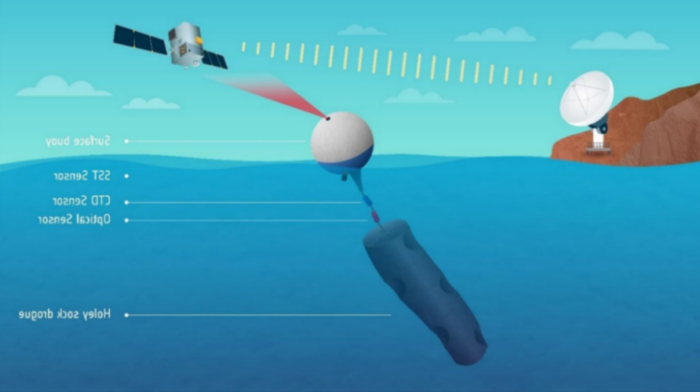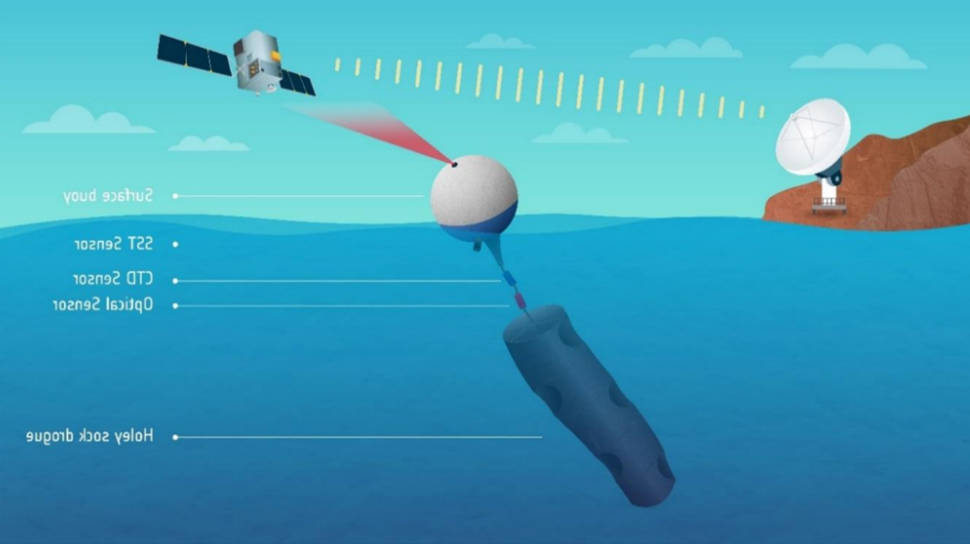
Ocean carbon from space and in synergy with autonomous platforms
- Project by: Sabrina Lodadio
- December 14, 2024
Visiting Scientist
Dr. Marco Bellacicco (CNR-ISMAR, Rome)
Period: June 2022 – June 2024
Tasks:
- Experimental fieldworks to observe and characterize the plankton responses (e.g. production and respiration, particle growth and losses) to physical processes (e.g. near-surface currents, sub-mesoscale to mesoscale dynamics such as eddies) by the coupled use of autonomous platforms (e.g., the first ever prototype of Biogeochemical-SVP drifter) and satellite data.
- Compute and quantify the organic carbon pump in response to physical (e.g., mixing, subduction/obduction) and biogeochemical forcing by the combined use of satellite, in-situ and autonomous platform observations.
- Characterize the effects of extreme events (e.g. marine heat waves) on marine ecosystem productivity (e.g., phytoplankton biomass and primary production, organic carbon fluxes) combining satellite and autonomous platforms observations.
Key Results:
- During the visiting period at ESA-ESRIN, Dr. Bellacicco and colleagues of CNR and other institutes have demonstrated how the use of Surface Velocity Programme (SVP) drifting buoys with self-contained backscatter sensors designed for extended deployment periods offers a promising solution for collecting data in challenging marine environments. It has been presented for the first time the integration of a commercially available, high-frequency and multispectral optical backscatter sensor into an SVP drifter, the so-called Backscatter Optical-SVP drifter designed to collect particle backscattering measurements (bbp) near the ocean surface. bbp measurements obtained by the BO-SVP drifter were reliable over a wide range of environmental conditions, showing a good agreement with independent datasets. The BO-SVP drifter captures the satellite sub- and pixel scale variability by combining the Lagrangian approach and a high frequency sampling. This configuration enables the acquisition of measurements across numerous pixels in a single day, enhancing validation activities for ongoing and future satellite products and the quantification of associated uncertainties. The measurements acquired by these platforms can offer valuable insights into particle distribution at fine spatial scales, daily variability, and its relationship with water masses type and ocean dynamics. The full manuscript is currently in print: https://doi.org/10.1175/JTECH-D-23-0161.1. This analysis is particularly linked to the ESA OC CCI programme and Ocean Cluster projects (e.g., SCOPE, MITHO, CAREHeat) where the satellite backscattering coefficient is commonly used to derived fundamental biogeochemical variables (e.g., phytoplankton carbon biomass) either if there is a paucity of in-situ observations that prevent a full uncertainty characterization with a consequent impact on derived parameters and computations.

2. During the visiting period, Dr. Marco Bellacicco and colleagues performed a scientific study to quantify and characterize organic carbon fluxes due to the ocean dynamics. This analysis is part of the EU H2020 AtlantECO project. The ocean’s biological carbon pump, which moves organic carbon to deeper waters, has mainly been studied by focusing on sinking particles and migrating organisms. However, new evidence suggests that carbon is also exported through dynamic processes like mixing and ocean currents, though global measurements of this impact are still limited. In their study, they analyzed a 4D time series (1997–2018) of particulate organic carbon (POC) and ocean circulation to measure this “physical injection pump” and examined how factors like mixing and horizontal/vertical currents drive carbon movement on both local and large scales. Additionally, they found that yearly variations in this process relate to El Niño–Southern Oscillation and the Southern Annular Mode, which indicates a strong link to water-mass formation in the Southern Ocean. The manuscript is currently under review. More details at: https://assets-eu.researchsquare.com/files/rs-4887998/v1_covered_c1a8c218-f47a-45f1-9e04-cf57529e4b20.pdf?c=1723430720.
3. During the visiting, Dr. Marco Bellacicco has also been involved in two specific studies about the marine heat wavers (MHWs) in the Mediterranean Sea within the ESA funded project CAREHeat. Since May 2022, the Mediterranean Sea has been experiencing an unusually long marine heatwave. This warm period, mainly affecting the Western basin, lasted until spring 2023, making it the longest marine heatwave recorded in the region in the past 40 years. Researchers have used in-situ and satellite measurements, along with advanced reanalysis tools, to understand the causes of this extreme event (https://doi.org/10.1088/1748-9326/ad02ae). A second study examined the effects of these heatwaves on the spring phytoplankton bloom in the Northwestern Mediterranean. By combining data from Biogeochemical-Argo floats, satellite observations, and marine ecosystem models, the study revealed that winter heatwaves can reduce phytoplankton carbon biomass by up to 70% in spring. This decline is caused by stronger water column stratification during heatwaves, which blocks the replenishment of nutrients from deeper waters, preventing surface phytoplankton from blooming. This process also lowers particulate organic carbon levels in the mixed layer, while intense heatwaves shift the timing of phytoplankton growth, impacting zooplankton biomass distribution. More details on https://doi.org/10.1029/2024GL109141.
4. During the visiting period at ESA-ESRIN, Dr. Bellacicco has been involved in a paper focused on improving an algorithm to detect phytoplankton carbon biomass from space. The original approach, originally developed by Dr. Bellacicco under the ESA Living Planet Fellowship, was refined to address previous limitations. The paper introduces a new model to estimate global phytoplankton biomass (Cphy), covering all subtropical gyres, which also considers phytoplankton’s photoacclimation. For further details, refer to the full paper: https://doi.org/10.1029/2023JC019922.

